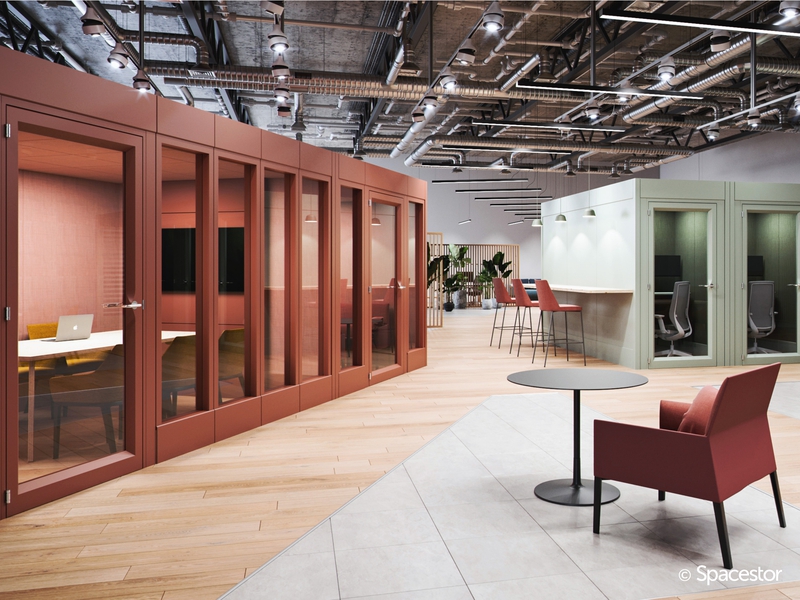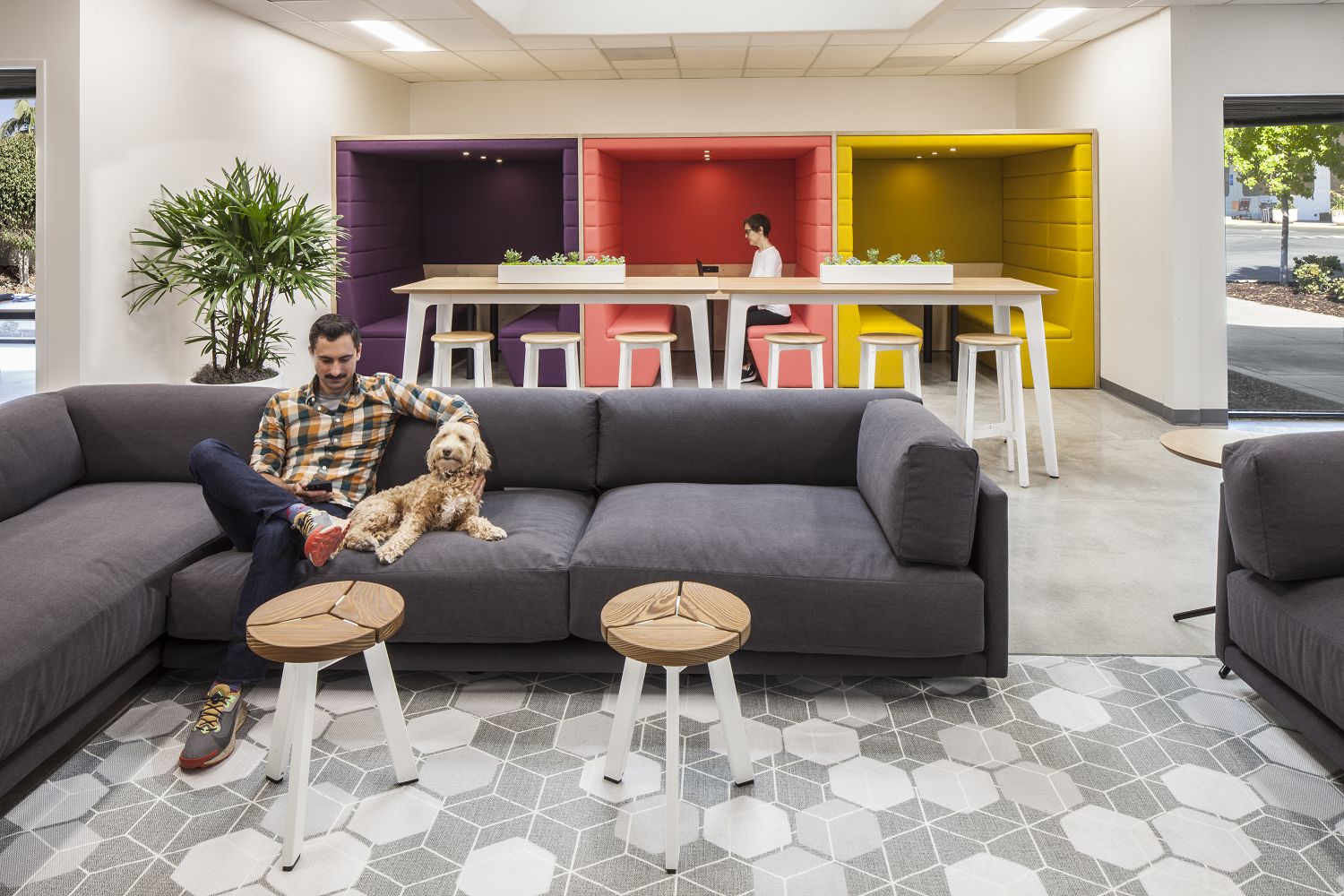
Universal Design - Designing for Pets in the Workplace
The issue surrounding new styles of working is still incredibly prominent in workspaces all over the world. Designers and workplace planners are keen to get large numbers of staff returning to the office in order to utilise the space effectively, and many places are offering a hybrid working arrangement to give people ‘the best of both worlds'. However, for the millions of people who acquired a pet during the pandemic, they have become used to working at home full time whilst caring for their companion.
According to a recent study by pet products company ‘Bark’, more than 70% of dog owners still working from home expect to miss their pet when they return to the workplace – compared with only 42% who will miss their spouse and 39% who will miss their children. The issue has in fact become so common that some pet insurers are now covering claims for the behavioural therapy and treatment of dogs that are distressed to see their owners leave them during the day.
A recent Insights Live brought up the topic of care for pets and children when people now return to the office. The discussion around universal design looked at many aspects of workplace design for all types of situations, and how offices can accommodate to them. Check out the full discussion in episode 28; Universal Design: A Holistic Approach to Workplace Experience
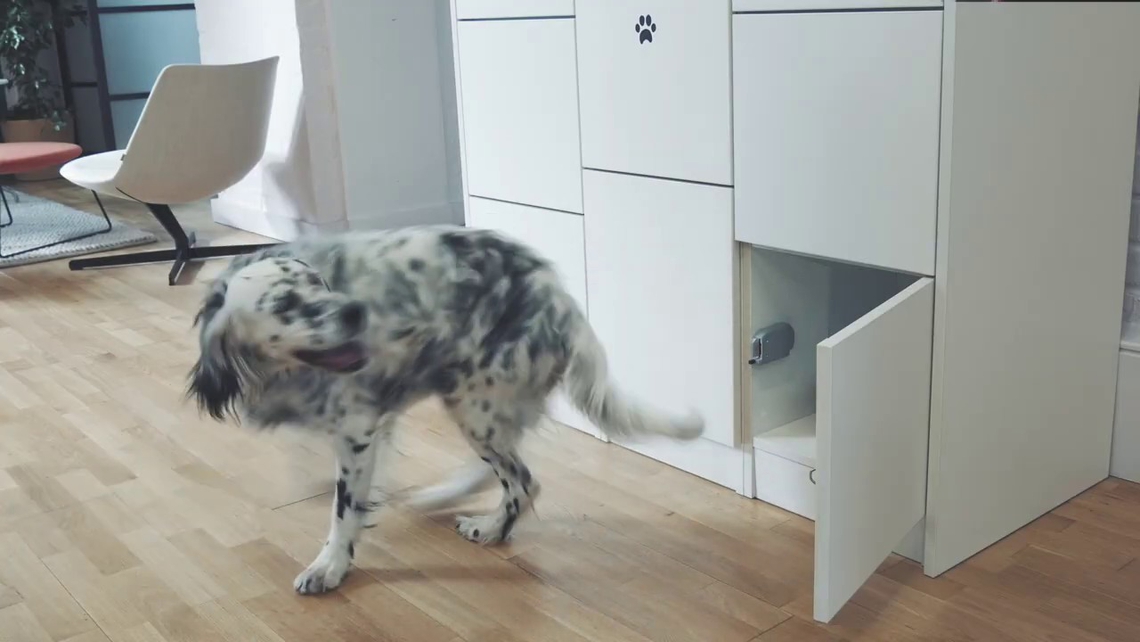
It’s no secret that pet ownership soared during the pandemic. According to the ‘American Pet Products Association’, 11.38m US households took on a new pet during this period, with 75% of all pet owners saying that spending time with a dog or cat helped to reduce their stress and increased their sense of wellbeing. Pandemic life challenged us to look with a new perspective and consider the importance of things closer to home. People began to realise the hidden benefits of spending more time with their pets and children. So what happens now as everyone starts to return to the office?
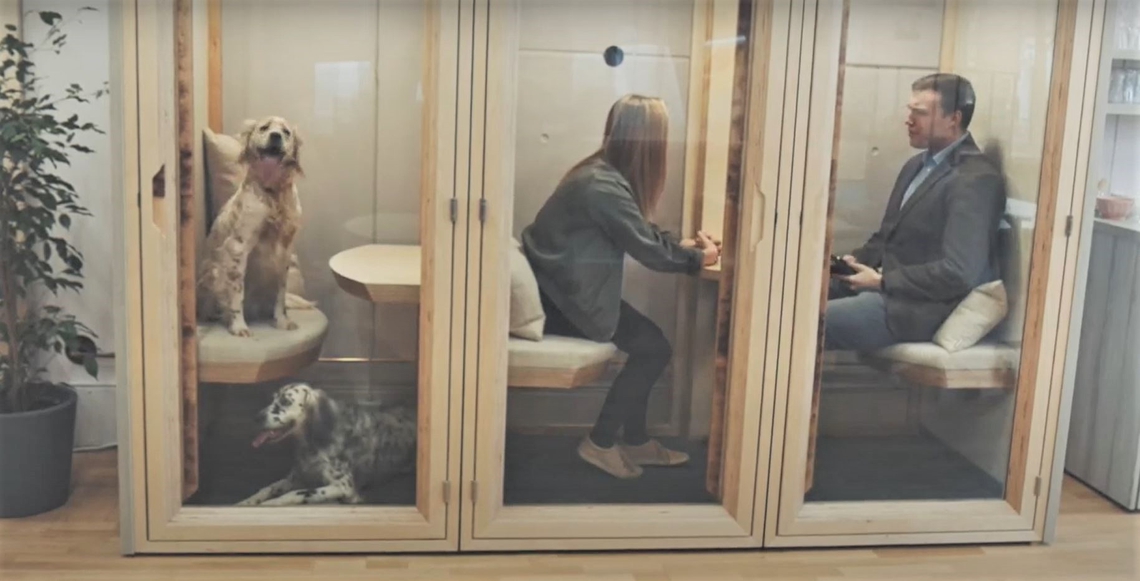
Now that the new hybrid style of work is common practice within companies, people know they can be just as productive at home as they can in the office. Many employees only venture in for certain meetings and occasional collaboration so they don’t lose touch with the rest of the workforce. For those with children and pets, the appeal of staying at home often outweighs the ‘need’ to be in the office.
Usually, when you’re at work, you don’t see what your pet does all day. This is especially relevant for dogs, who may scratch, bark or whine, especially if a delivery comes. Now people are noticing everything they do and are thinking ‘I didn’t know you did that all day’ and they feel they can’t leave the dog alone for ten minutes, much less for ten hours.
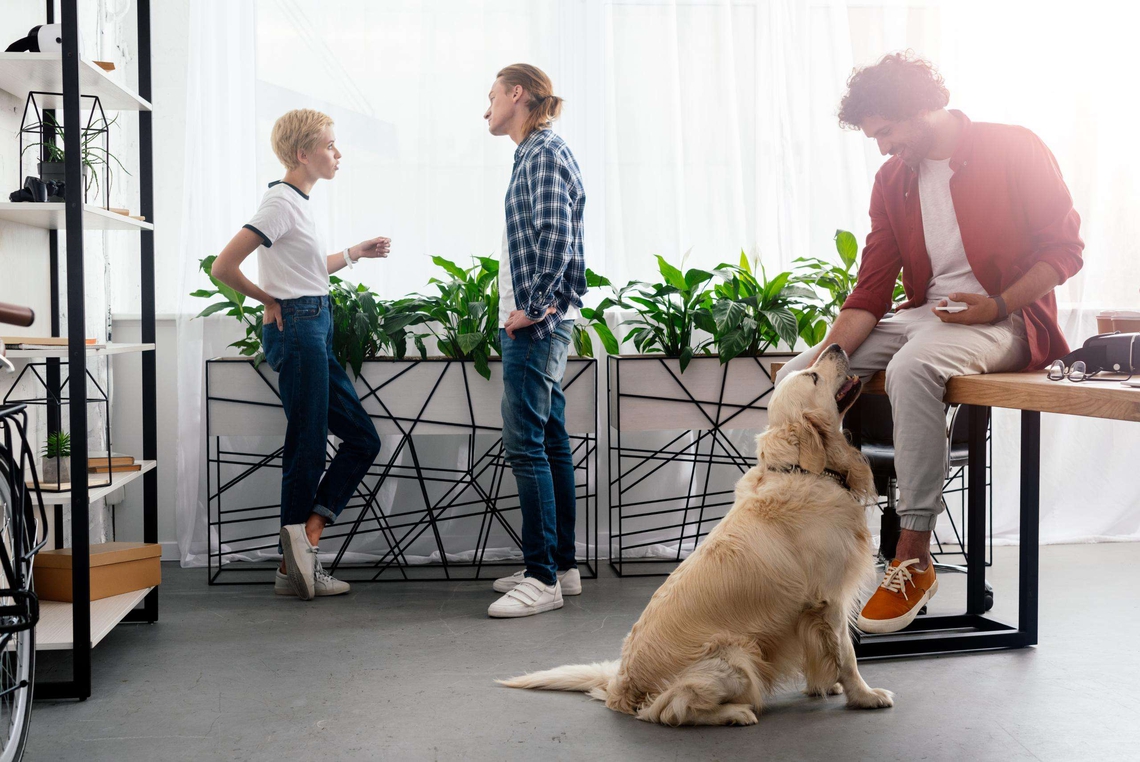
So, employers are faced with the difficulty of enticing people back into the office. Offering solutions like bringing their pet into work could be a great incentive to encourage more people back in, as well as potentially offering some additional benefits to help attract the top talent to the business. Below, we look at some of the benefits companies can offer, and some of the advantages and disadvantages of bringing a pet to work.
Allowing people to bring dogs to the office can be complicated - especially for a small business - and the companies that do allow this generally have pretty strict policies. These can include making employees verify that their pet is adequately trained and providing evidence that the pet is insured, cleaned, free of parasites and vaccinated.
However, dogs can provide many benefits to people in the workplace, aside from offering a good reason for employees to work from the office instead of their home. Researchers have studied the impact of dogs in the areas of social support and stress reduction, performance, health and safety, and social interactions. The potential benefit of dogs in the workplace is that they may have a positive effect on the social interactions among employees and create more opportunities for co-workers to interact in a positive setting. There is a positive correlation between the impact of mental well-being and having pets around you, which can help stimulate productivity - perhaps most offices could do with a ‘therapy dog’!
On the other side, their presence may also pose several hazards and risks. Some of these hazards and risks are related to allergies, phobias, or other sensitivities. An employer’s decision to accept a dog in the workplace ought to consider the potential impacts to the health, safety, and well-being of all employees.

Pet-friendly offices could also look to offer benefits to the furry friend as well as the employee, and insurance for animal companions could be among the trending post-pandemic employment perks. A recent study by Nationwide showed that even before the pandemic, pet health insurance has quickly become one of the most requested voluntary benefits as its popularity continues to skyrocket among US employers looking to attract, engage and retain pet-owning employees. So along with paid time off, private health, and pension plans, employers can offer pet owners benefits in insurance and care of their animals.
Besides pet insurance, a growing number of businesses are allowing their employees to bring their animals to work. The most famous of these is Amazon which, once again, ranked as a top dog-friendly business, with more than 1,000 dogs at Amazon’s Seattle headquarters, thanks to the company’s dog-friendly work policy. Jennifer Skipper, Amazon’s “Woof Pack” manager (how about that for a dream job?) said “Our dogs are a special part of Amazon’s peculiar culture, and a mechanism for connection. We’ve found that dogs in the office actually contribute to our collaborative company culture.”
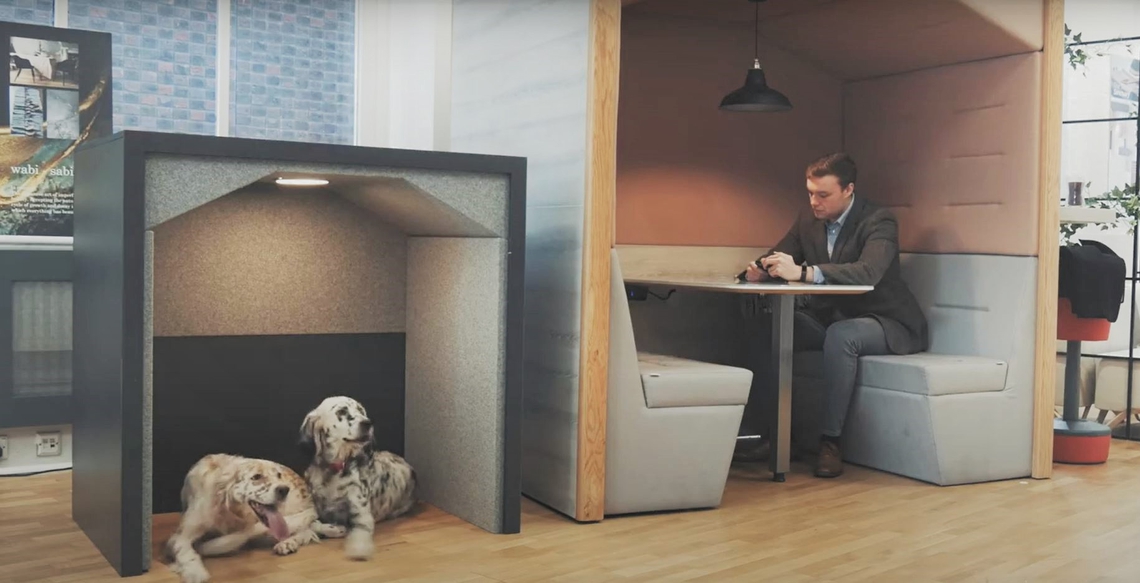
When considering the prospect of dogs in the workplace, it is important to know in which situations dogs are discretionary and in which situations dogs are a legal accommodation. Employers are obligated to allow dogs only in select circumstances, such as service dogs, like guide dogs. However things are different with a pet dog, where there may be limitations due to insurance reasons or landlord issues, but if this is not an issue, a pet in the workplace can bring a number of added benefits.
